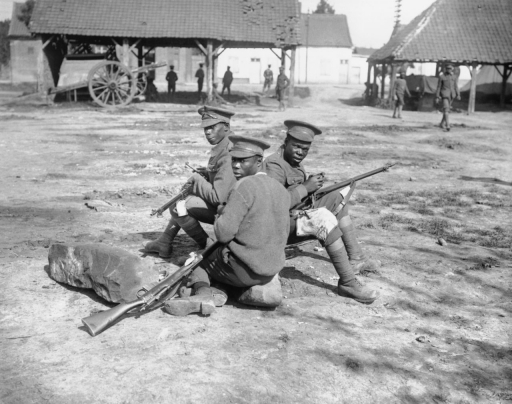The contribution made by Caribbean soldiers to the Allied effort in the Great War is being given further recognition in a series of initiatives by one of the leading British-Caribbean charities in the UK.
The West India Committee has unveiled a clutch of information and resources in a number of online and interactive offerings, and an exhibition in London’s Docklands.
The West India Committee explains that it was ‘at the heart of the British Caribbean’s war effort’. In 1915, it established its own Contingent Committee to coordinate efforts to get men from the region to the front. The War Office in London had initially set its face against West Indian troops serving in the field but in that year, spurred by the drain on manpower being experienced, agreed to accept volunteers.
Some 16,000 men volunteered for the newly-formed British West Indies Regiment. Soldiers from the BWIR served on the Western Front, in the Middle East & Africa.
Their participation was not, however, treated as that of equals. The military authorities largely confined the regiment’s duties to ‘labour’ activities, including the digging of trenches, building roads, provision of stretcher-bearers and working in ammunition dumps.

Troops of the British West Indies Regiment cleaning their rifles on the Albert – Amiens road, September 1916 (© IWM Q 1201). Photo courtesy http://www.centenarynews.com
The men’s deployment intensified during the Battle of the Somme as casualties among fighting troops escalated, but their work ethic – coupled with the fact that they were often serving in dangerous and exposed terrain – gradually won them the plaudits of the top brass.
Tribute
Britain’s Western Front commander Sir Douglas Haig, speaking in 1917, said the BWIR’s work had been ‘very arduous and has been carried out almost continuously under shell-fire. In spite of casualties the men have always shown themselves willing and cheerful workers…….The physique of the men is exceptional, their discipline excellent and their morale high’.
By the end of the war, some 185 men from the BWIR had been killed in action and almost 1,100 had perished of sickness and disease.
The records held by the West India Committee give a fascinating glimpse of the Caribbean’s role in the First World War and are all the more valuable given the fact that official files on the British West Indies Regiment were damaged during the Blitz in 1941. So the Committee’s collection – meticulously maintained over the years – forms a vital archive on this period. Now it wants to open up its access as much as possible through its Great War Project.
With the help of sponsors in the UK and the Caribbean, the Project now encompasses a variety of searchable archives – including an interactive website and an ebook – and an exhibition at the Museum of London, Docklands.
Discover more on The Caribbean’s Great War website. The exhibition is on display at the Museum of London Docklands, No.1 Warehouse, West India Quay, London E14 4AL until May 2nd 2016.
Further reading about the British West Indies Regiment can also be found on the IWM website.
Also in Centenary News:
Trinidad & Tobago veterans honour First World War dead. Article courtesy http://www.centenarynews.com


